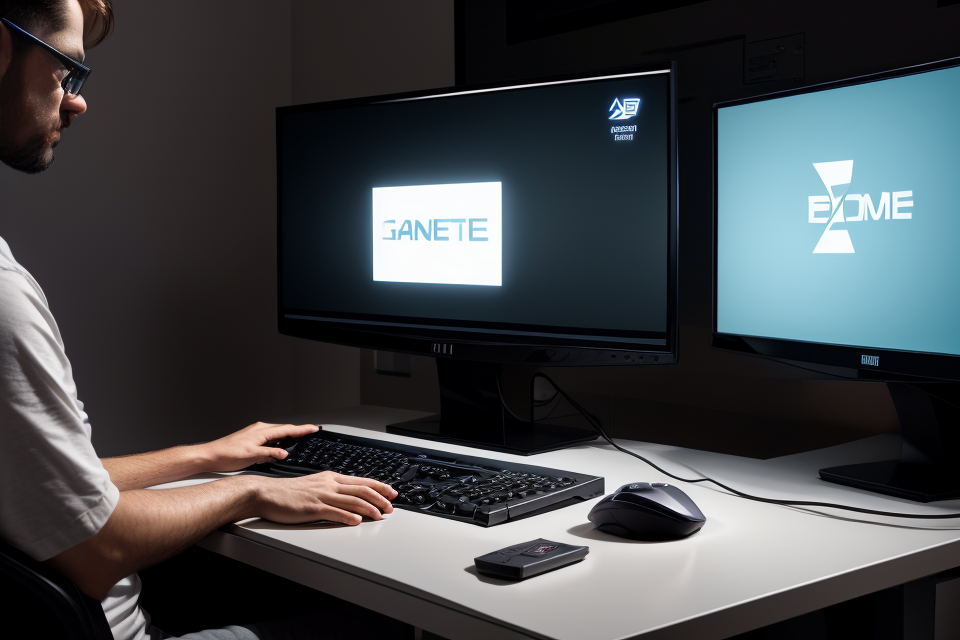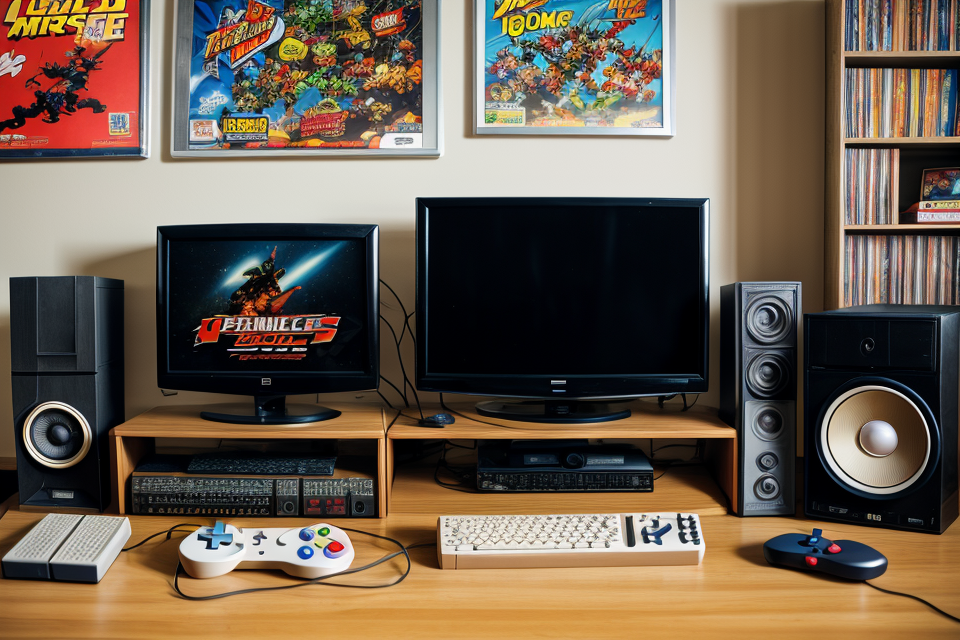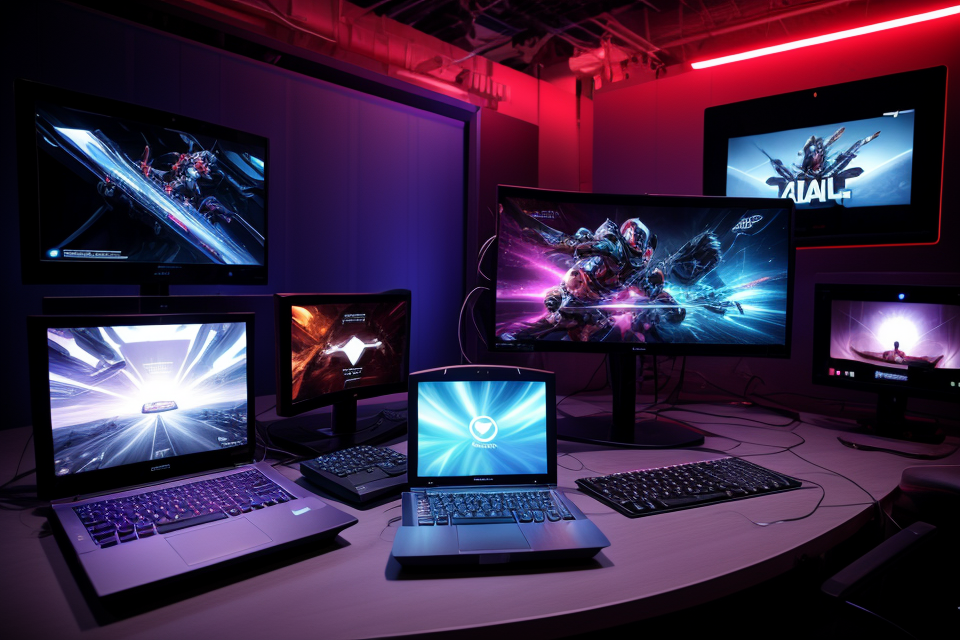
Are you tired of buying new games that are incompatible with your computer? Worry no more! Checking your computer’s specifications is the key to finding the right games that will run smoothly on your system. In this article, we will guide you through the process of finding your computer’s specifications and determining game compatibility. With just a few clicks, you’ll be able to determine if your computer can handle the latest releases or if it’s time for an upgrade. So, let’s get started and find out how to check your computer’s specs for game compatibility!
What are computer specs?
Computer specs refer to the technical specifications of a computer system, including its hardware and software components. These specifications provide detailed information about the computer’s capabilities, such as its processing power, memory capacity, storage space, and graphics performance. Understanding these specifications is crucial for ensuring that a computer is capable of running certain games and applications without any issues.
Importance of computer specs for game compatibility
- Affect on game performance: The specifications of a computer play a crucial role in determining its ability to run games smoothly. For instance, if a game requires a specific graphics card or processor, a computer without those specifications may not be able to run the game properly, leading to reduced performance and a poor gaming experience.
- Impact on game playability: In addition to affecting game performance, a computer’s specifications can also impact its ability to run certain games at all. Some games may have specific requirements that are not met by certain computer systems, leading to compatibility issues and preventing the game from being played. Therefore, it is essential to check a computer’s specifications to ensure that it meets the requirements of the games that you want to play.
Finding your computer’s specs
Method 1: System Information
When it comes to finding your computer’s specs, the first method you can try is by accessing the System Information. This feature is available on both Windows and Mac operating systems, and it provides a comprehensive overview of your computer’s hardware and software specifications.
Accessing System Information on Windows
To access the System Information on Windows, follow these steps:
- Right-click on the Windows Start button and select “System” from the menu.
- In the System window, click on the “About” button, which is located at the bottom left corner of the window.
- The System Information window will open, displaying all the relevant information about your computer’s hardware and software specifications.
Accessing System Information on Mac
To access the System Information on Mac, follow these steps:
- Click on the Apple menu and select “About This Mac.”
- The System Information window will open, displaying all the relevant information about your Mac’s hardware and software specifications.
Method 2: Command Prompt
Another method to check your computer’s specs is by using the Command Prompt on Windows and the Terminal on Mac. These tools provide a more detailed view of your computer’s hardware and software specifications, including information about the CPU, memory, and storage.
Windows Command Prompt
To access the Command Prompt on Windows, follow these steps:
- Press the Windows key + R on your keyboard to open the Run dialog box.
- Type “cmd” and press Enter to open the Command Prompt.
- Type “systeminfo” and press Enter to display the System Information window.
Mac Terminal
To access the Terminal on Mac, follow these steps:
- Open the Terminal app from the Applications/Utilities folder or from Spotlight.
- Type “sysctl -a” in the Terminal window and press Enter.
- The Terminal will display a list of system information, including details about the CPU, memory, and storage.
Understanding your computer’s specs
In order to determine the compatibility of a game with your computer, it is important to understand the specifications of your computer. These specifications, commonly referred to as “specs,” include the processor, memory (RAM), and storage.
Processor
A processor, also known as a central processing unit (CPU), is the “brain” of a computer. It is responsible for executing instructions and performing calculations. There are several common types of processors, including Intel and AMD.
When it comes to gaming, processor speed is a crucial factor. A faster processor can handle more complex tasks and provide a smoother gaming experience. Processors are typically measured in gigahertz (GHz), with higher numbers indicating a faster processor.
Memory (RAM)
Memory, or random access memory (RAM), is a type of storage that a computer uses to temporarily store data. It is important for gaming because it allows the computer to quickly access the data needed to run a game.
When it comes to gaming, a higher amount of RAM is generally better. However, the recommended amount of RAM for gaming can vary depending on the specific game and its requirements. As a general rule, 8 GB of RAM is a good starting point for gaming, but 16 GB or more is even better.
Storage
Storage is another important aspect of a computer’s specifications, particularly for gaming. There are several types of storage, including hard disk drives (HDD) and solid state drives (SSD).
HDDs are traditional, mechanical hard drives that store data on spinning disks. They are generally slower and less reliable than SSDs, but they are also less expensive.
SSDs, on the other hand, are faster and more reliable than HDDs. They use flash memory to store data, which allows for much faster read and write speeds. This can be especially important for gaming, as it can help improve load times and overall performance.
Overall, understanding your computer’s specifications is key to determining its compatibility with a particular game. By considering factors such as the processor, memory, and storage, you can ensure that your computer is able to handle the demands of the game and provide a smooth gaming experience.
Improving game compatibility on your computer
Improving game compatibility on your computer can be achieved by upgrading your hardware and optimizing your settings. In this section, we will discuss the two methods in detail.
Upgrading hardware
Upgrading your hardware is one of the most effective ways to improve game compatibility on your computer. There are three main components that you may need to upgrade: processor, memory, and storage.
- How to upgrade your processor, memory, and storage:
- Upgrading your processor involves purchasing a new processor that is compatible with your motherboard and replacing the old one. This process can be quite complex and may require professional assistance.
- Upgrading your memory involves purchasing new memory modules that are compatible with your motherboard and replacing the old ones. This process is relatively easy and can be done by following the manufacturer’s instructions.
- Upgrading your storage involves purchasing a new hard drive or solid-state drive and installing it in your computer. This process can be quite complex and may require professional assistance.
- Benefits of upgrading for game compatibility:
- Upgrading your processor can significantly improve your computer’s performance, allowing you to play games that require more processing power.
- Upgrading your memory can improve your computer’s performance by allowing it to handle more complex tasks, such as running multiple programs at the same time.
- Upgrading your storage can improve your computer’s performance by providing more space for games and other programs.
Optimizing settings
Optimizing your settings is another effective way to improve game compatibility on your computer. Here are some tips for optimizing your game settings:
- Adjusting graphics settings:
- Lowering the graphics quality can improve your computer’s performance by reducing the strain on your graphics card.
- Turning off unnecessary graphics features, such as anti-aliasing and shadows, can also improve your computer’s performance.
- Adjusting other settings:
- Turning off unnecessary programs and processes can improve your computer’s performance by freeing up resources.
- Adjusting the game’s resolution and aspect ratio can improve its performance by making it more compatible with your computer’s specifications.
By upgrading your hardware and optimizing your settings, you can improve game compatibility on your computer and enjoy a smoother gaming experience.
FAQs
1. How do I check my computer’s specifications?
To check your computer’s specifications, you can use the System Information window in Windows or the “About This Mac” window in macOS. These windows provide information about the hardware and software components of your computer, including the processor, memory, storage, and operating system.
2. How do I find out if my computer can run a specific game?
To find out if your computer can run a specific game, you need to check the game’s system requirements. These requirements are usually listed on the game’s official website or in the game’s documentation. Compare your computer’s specifications to the minimum and recommended system requirements for the game. If your computer meets or exceeds the requirements, it should be able to run the game.
3. What is the best way to check my computer’s specifications?
The best way to check your computer’s specifications depends on your operating system. In Windows, you can open the System Information window by pressing the Windows key + X and selecting “System.” In macOS, you can open the “About This Mac” window by clicking on the Apple menu and selecting “About This Mac.” Both of these windows provide detailed information about your computer’s hardware and software components.
4. Can I use third-party software to check my computer’s specifications?
Yes, there are many third-party software programs that can check your computer’s specifications. Some popular options include CPU-Z, HWiNFO, and Speccy. These programs can provide more detailed information about your computer’s hardware components than the built-in System Information or “About This Mac” windows.
5. What should I do if my computer doesn’t meet the minimum system requirements for a game?
If your computer doesn’t meet the minimum system requirements for a game, you may not be able to run the game smoothly. You can try to improve your computer’s performance by upgrading your hardware, such as adding more RAM or replacing your graphics card. You can also try to optimize your game settings to reduce the strain on your hardware. However, if your computer is significantly below the minimum requirements, it may not be worth trying to run the game.


